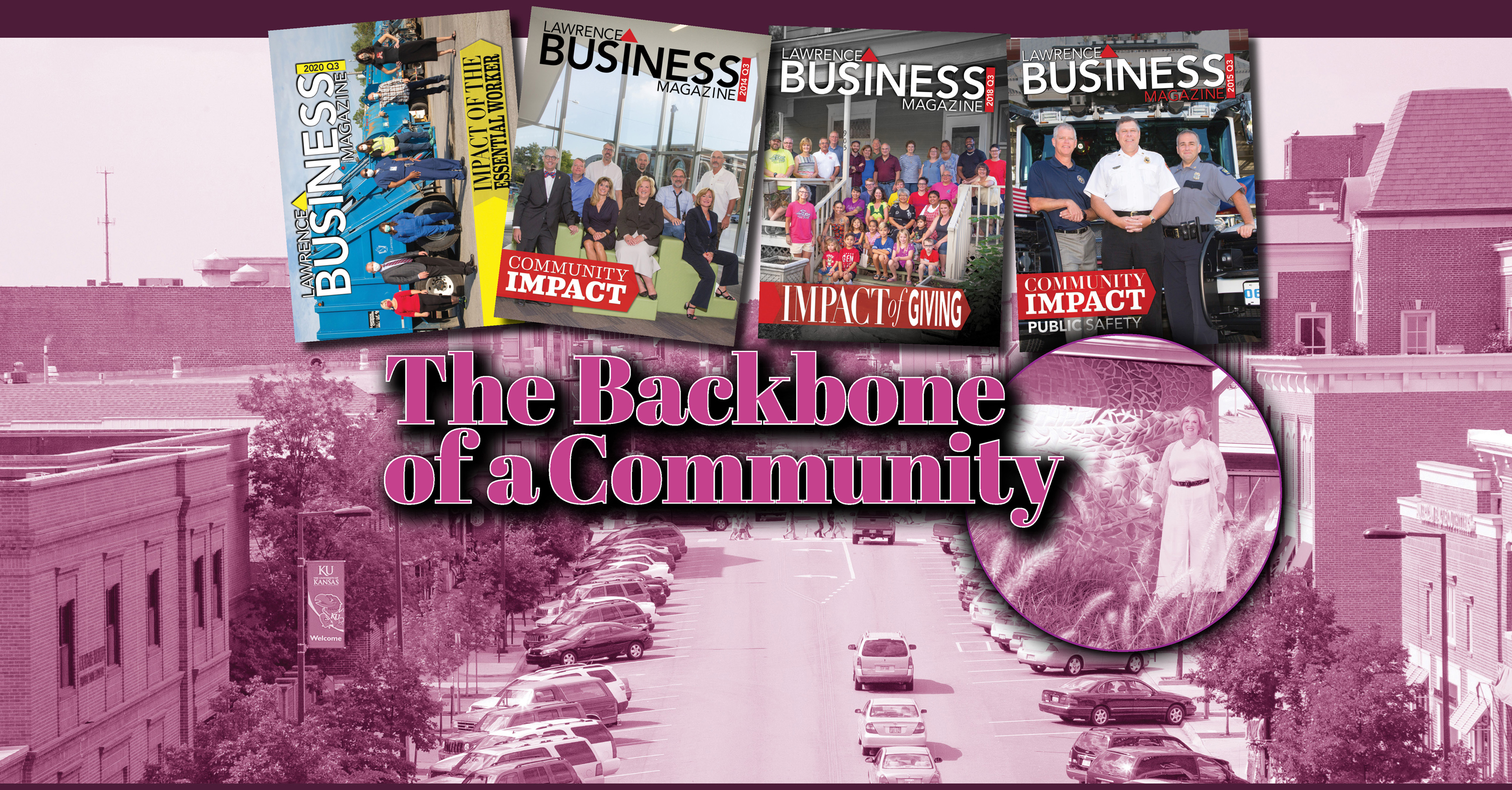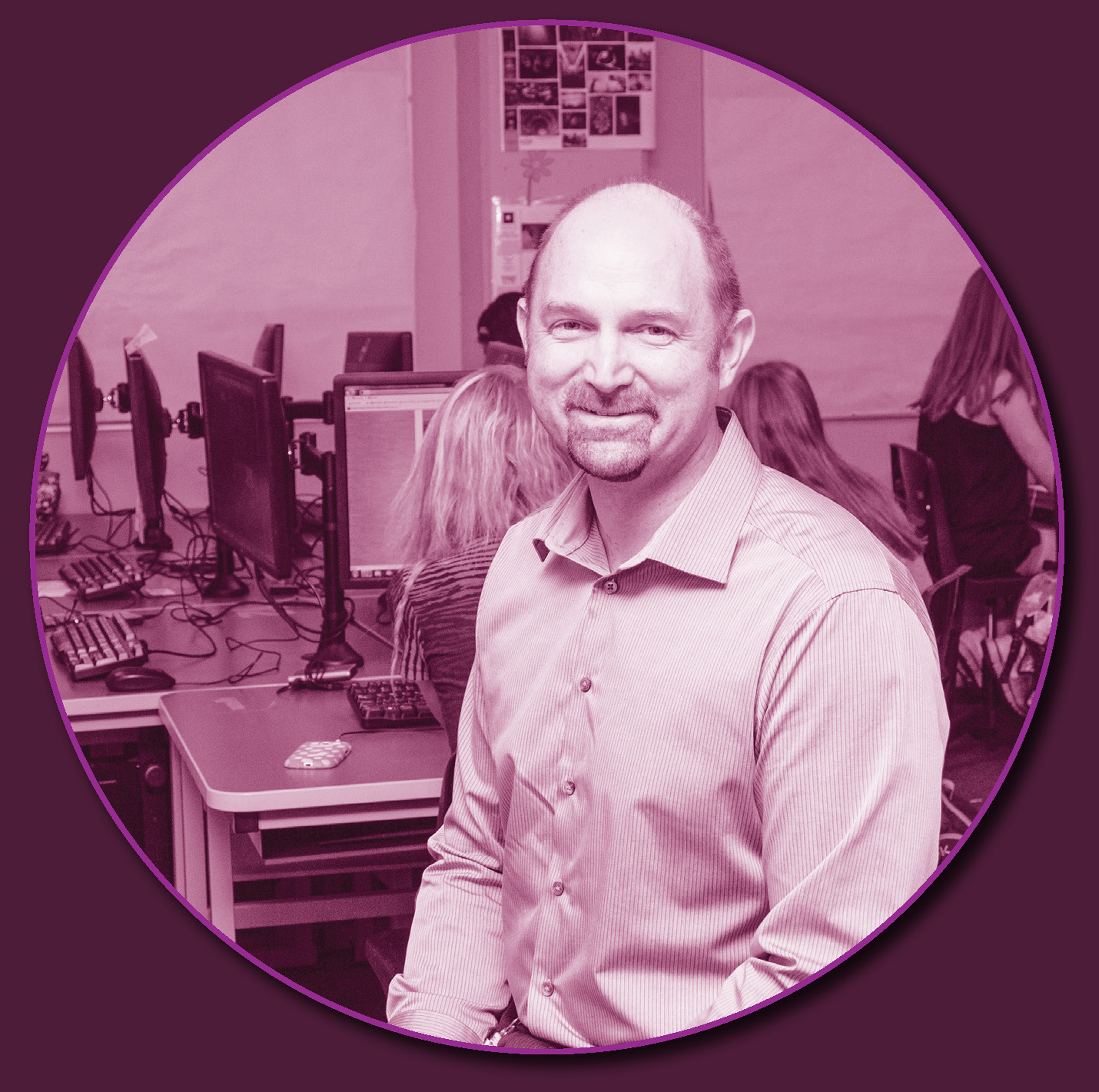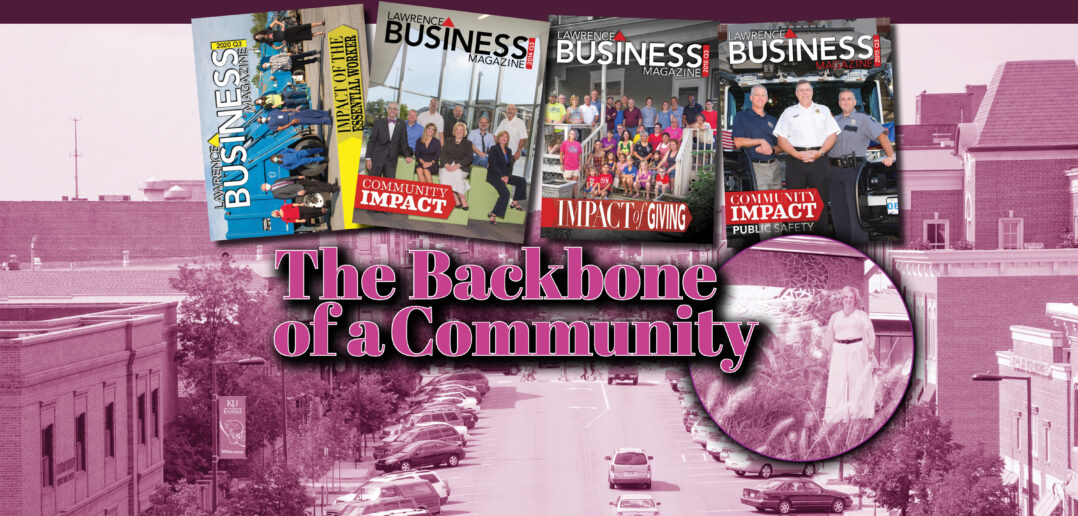| story by | |
| photos by | Steven Hertzog |
| OPEN A PDF OF THE ARTICLE |
Serving a community through government or nonprofit comes with many of the same concerns as a business but can have many more people to whom they must answer.

LBM Covers: Community Impact-Public Safety (2015Q3), Community Impact (2014Q3), Impact of Giving (2018Q3), Impact of the Essential Worker (2020Q3)
Massachusetts Street looking south, and Diane Stoddard (2014Q3)
Governmental and nonprofit entities are, in many ways, like any other business. They have to worry about funding, recruitment and retention, and standing in the community. The only difference is they aren’t beholden to an owner or set of owners—they’re accountable to the people they serve and those who pay the taxman (or the endowment, your pick). During the last 10 years, they’ve endured many issues in an attempt to achieve their main goal: to serve the people of Lawrence and Douglas County.
Working at City Hall and in public service, Assistant City Manager Diane Stoddard has seen it all. She’s been working there since 2007 and last spoke to Lawrence Business Magazine in 2014. Since then, she has worked to create programs and initiatives to keep Lawrence running. In 2015, Stoddard was named interim city manager, a position she kept for nine months. About her time in that position, she says: “Honestly, there were some pretty major challenges that had come to the city during that period of time, and personally, I am extremely proud of how our elected officials [and]our staff handled everything during that year.”
Some of those challenges included the resignation of a mayor, which Stoddard says has never happened in the history of the city. The other issue: The Oread Hotel. “During my tenure as interim city manager, the city made a decision to proceed with filing a lawsuit against The Oread based on what we had learned.” The lawsuit accused the hotel developers of fraudulently collecting tax rebates and was settled in 2017 in favor of the city.
More recently, Stoddard was involved in planning Lawrence VenturePark and the Economic Development Strategic Plan, both meant to stimulate the economy and bring big business to Lawrence while keeping the small-town feel intact. The VenturePark “is the second industrial park I’ve been involved with in my career,” she says. “Getting the first inaugural tenant into a business park is a big deal. It’s an even greater challenge when you have a park that is a remediation site, so it has some special qualities.” The City opened up requests for proposals and ended up selecting VanTrust Real Estate, out of Kansas City, to be the developer of several key lots. “They have been able to bring the Pretzels Inc. project that has just been completed,” she adds.
Job Upgrade

County Commissioner Patrick Kelly (2014Q3)
In addition to career bureaucrats, city government is also made up of common citizens elected to represent the people. Commissioner Patrick Kelly, who was elected in 2018, wears many different hats and serves as the executive director of curriculum and instruction for USD 497. Between 2014, when he was last interviewed for a story in Lawrence Business Magazine, and the time of publication, he was promoted to director of the Lawrence College and Career Center, then to his current position. These two jobs have a lot in common: “There’s been quite a bit [of crossover]because [of]those issues that come up at the county level, whether it’s public health or how we just support families.”
Kelly says it’s not all about health orders and vaccine clinics, though. It’s also about supporting vulnerable populations through housing. Because Douglas County has had a large increase in community members’ stress about housing, mental health issues have moved to the forefront. Douglas County Commission is very concerned about all of these things.
“Those all also impact our families and our students and staff. Making connections [and]being able to recognize the multiple partners it takes to make Douglas County great, it’s certainly a benefit to working at both places,” he says.
As executive director of curriculum and instruction, Kelly also had to help weather COVID-19 and help teachers completely revamp their curriculum for the classroom. He helped support students and parents, all of which, he admits, was and still is quite tough. “We got to support teachers in providing professional development on new ways of instruction. Most teachers were not trained to provide pandemic instruction.” He says he looked at curriculum standards and had to determine how to make adjustments in curriculum based on the new instructional models, what the most important standards were that were critical for that next level and which were priorities.
Communicating with families, spending a lot of time helping them help their young learners, that was a priority, he adds. Because most often, they were still at home when they were learning.

DCCCA CEO Lori Alvarado standing by sign and at her desk in a meeting (2014Q3)
Kids These Days
DCCCA CEO Lori Alvarado knows a lot about working with children herself as head of a nonprofit organization that, across four states, runs several programs aimed at children and teens. Since 2013, DCCCA has expanded beyond Kansas and Oklahoma to Iowa and Nebraska, as well. Inside Kansas, however, Alvarado says the biggest expansion is the family preservation project. “We have the contract with [the]Kansas Department for Children and Families [DCF] to provide family preservation services in the Kansas City region, which is five counties, and the Wichita region, which is 10 [counties]. So we cover all the referrals that come from DCF. The purpose of that program is to strengthen families so that they can retain their children safely and in a way that makes progress toward goals.”
Funding for a nonprofit can be hard, and in 2013, resources were shrinking in the field. However, as Alvarado states now, resources can go back and forth between plentiful and scarce. “I think those situations ebb and flow as either the federal government and state government change priorities, and make funding available in different ways. So I would say in some instances, it’s gotten better, and in some instances, it’s not. It’s always a challenge when you do work that we do with vulnerable populations, whether that’s families, people who have substance-use disorders [and]communities that are struggling with suicide and mental health challenges.” She explains when you’re working with clients and families with those challenges, resources are at a premium, because with even more resources available, so much more can be done to help.
Technological Trade-Off
Working with people is also something Lawrence Fire and Medical Chief Shaun Coffey does on a daily basis. He has been in the office since 2018, first as interim and then permanently as of 2019. Lawrence Business Magazine interviewed his predecessor, Chief Emeritus Mark Bradford, in 2015, and at the time, anyone who wanted to apply to be a paramedic had to have experience in the field. However, hiring circumstances have changed. Schools can’t produce paramedics fast enough, and the pool of applicants has shrunk, Coffey explains.
“I don’t know what it is for sure, to be honest, but I know for hiring paramedics, the colleges and the programs can’t put them out fast enough for the demand that’s there.” Some of the programs they send their firefighters to, such as Central Jackson, include people in the class who are already working for other agencies. “I think it will continue to be a battle for the next couple years,” Coffey says, adding that believes the economy has something to do with it. “When things are going well with the economy, the demand is less for people who want to participate.”
Hiring problems aside, getting help to a struggling person in need is the main goal of paramedics. However, that help doesn’t necessarily need to be provided by paramedics exclusively. Getting citizens trained in CPR is a way for bystanders to help save someone’s life, and under Coffey, they’ve found a simple way to do that. “As we look to the future, one of the things you’ll see coming out … is an application called PulsePoint.” The app is for smartphones, and it’s a community-driven initiative to get bystander CPR. “We want to have more people be able to reach out to other community members and push hard and push fast. It can make a big difference,” he adds.

Mark Bradford, former Fire Chief poses in front of a fire truck with fiLawrence citizens and hands a fireman’s pin to a young boy (2015Q3); Firemen and women prepare to greet visitors at an open house (2015Q3) and EMT members learn new techniques from an instructor (2018Q1)
The app would give a notification to those within a certain radius that there is a medical emergency happening near them, so the person with the app could go help. However, this does create the possibility for gawkers at the scene. “There is somewhat of a trade-off with that concern,” Coffey admits. “One of the nice things about the application is that we can control how far it sends notifications out. We can send it to only people who are nearby. We can set it for a quarter-mile [or]a half-mile radius.” If a person has responded multiple times, and there’s no record they’ve participated, authorities can reach out and offer that person a CPR lesson. Eventually, if a person seems to be participating just for observational view, he or she can be removed from the app.
What the Future Holds
Looking ahead, these leaders know what the future has in store. Coffey believes the Fire and Medical department will continue to embrace technology. “I think [the department]is going to continue to evolve, and we, as an organization, have continued to evolve. One of the things we’ve tried to do … is maximize technology wherever we can.”
Alvarado wants to expand DCCCA’s services to better serve families. “I see us integrating our services even more effectively to address multiple issues (or challenges) for families and clients.” The main issue she says the organization wants to concentrate on in the next three to five years is becoming an even stronger agency that addresses women’s and children’s issues.
The City’s Stoddard is hopeful community investment will reap dividends down the line. “We’re going to see that we have made investments in infrastructure and in people and in neighborhoods that we are seeing pay off and continue to pay off in 10 years,” she says.
Commissioner Kelly hopes for inclusivity, both with students and the citizens of Douglas County. “What I hope for is that no matter what your background is [or]what your experience is, whether you’re in the school district or the county, we can create a space for you to thrive,” he says.
![]()




